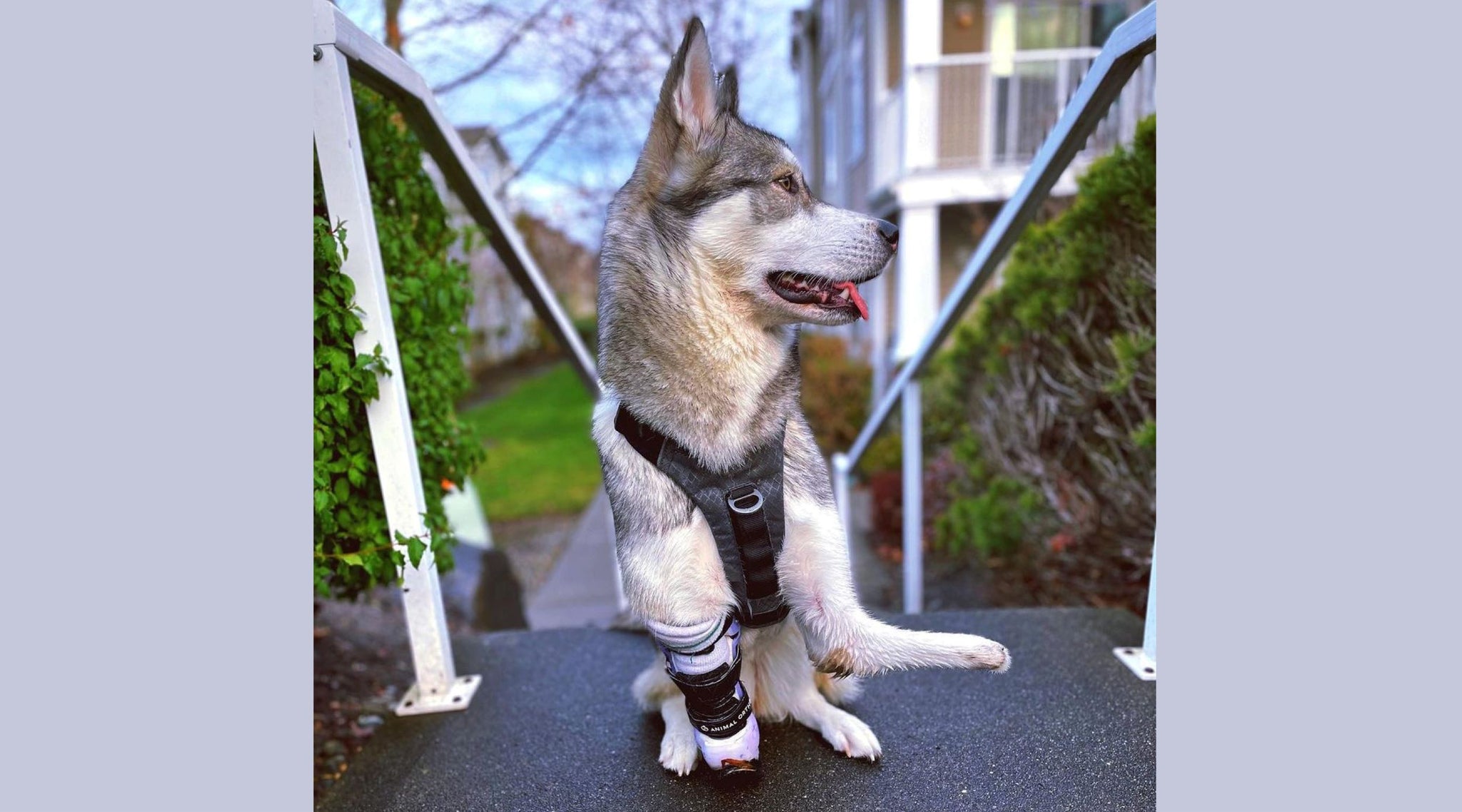5 Reasons Why a Dog May Need an Amputation

Many people wonder why anyone would want to put their dog through a limb amputation. They may see it as an extraordinarily painful procedure that doesn’t benefit the dog. However, amputations are a last resort to help a dog's wellbeing and health, much as it does for human amputees.
There are many reasons that a dog may be an amputee, from birth defects in puppies to cancer in older dogs. In order to understand why a dog may need this procedure, you must understand what types of canine amputations there are.
Types of Amputations
-
Front Limb
-
Above the Elbow - Typically done by removing the entire limb at the shoulder to reduce the risk of injury to the residual limb but can be more difficult to accommodate with a prosthetic device.
-
Below the Elbow - Leaves a decent amount of a residual limb which can be accommodated with a prosthetic more easily.
-
Hind Limb
-
Above the Hock (Ankle) - Typically done by removing the entire limb at the hip to reduce the risk of injury to the residual limb but is currently extremely difficult to accommodate with a prosthetic device.
-
Below the Hock (Ankle) - Leaves a decent amount of a residual limb which can be accommodated with a prosthetic more easily.

Conditions Benefiting from Amputation
There are many reasons why a dog may need to have a limb amputated. Here are a few causes for amputation:
-
Fractures - Some fractures may be irreparable, such as if the bone shatters. Surgery to reduce a fracture may also be expensive and leave a long recovery time. In these cases, amputation is seen as a quick fix to get the dog back on track to healing.
-
Infection - Some wounds may become infected and go unnoticed by the pet parent, especially since pets are masters at hiding pain and signs of illness. If not taken care of quickly, an infection may get into the bone and lead to life-threatening circumstances. In this case, amputation is the only way to get rid of the infection.
-
Cancer - Some forms of cancer may leave a dog immobilized or in pain. Cancer also poses the risk of spreading throughout the body to cause widespread negative effects. In this case, amputation is the best option to remove the cancer. Read more about amputation due to cancer through Loki’s inspiring story here.
-
Severe Arthritis or other Chronic Debilitating Conditions - Some conditions, such as severe arthritis, significantly hinder the quality of the dog's life. Arthritis is the degeneration of joints which can cause extreme pain and limited range of motion within the joints. Amputation may be an option to remove the area of pain to improve the dogs quality of life.
-
Congenital Deformity - While congenital deformities don’t always lead to amputation, they may cause a leg length discrepancy where one or more legs are shorter than the others or one or more legs are malformed.
__original.jpg?auto=format&w=1024)
Clearly, there are many reasons why a dog may need to have an amputation. All of these conditions focus on curing the dog of an ailment, such as cancer or infection, and increasing the dogs overall quality of life. Increasing a dog's quality of life is what we focus on at Animal Ortho Care. We believe that all pets deserve to live happy, healthy lives.
Quality of Life Post-Amputation
It may seem that a dog who loses a limb would be worse off than a dog with all four legs. However, it is often seen that a dog's quality of life improves dramatically soon after their amputation surgery. This is because the source of pain, such as a traumatic fracture or painful arthritis, is now gone. They no longer experience daily pain and discomfort associated with their previous condition. They also learn quickly how to shift their weight to accommodate their new gait style of walking with three legs.
However, this change in walking style is not beneficial in the long term. Over time, the other legs take on more weight than they would have without amputation, which can lead to joint degeneration and changes in the vertebrae of the spine. The remaining joints take on extra stresses to accommodate the loss of a limb, which leads to the rapid degeneration of these remaining joints. Ultimately, if the remaining joints are not supported in some fashion, then the dog may have a shortened life span due to this degeneration.

Thankfully, Prosthetics and Wheelchairs are advancing and are more accommodating than ever. Here are a few options for amputee pets:
-
Partial Limb Prosthetics are a great option for below the elbow or below the hock amputees. These prosthetics act like the previous limb to allow the dog to walk normally again.
-
Full Limb Prosthetics attempt to replace the previous limb but are currently only offered for front limb amputees.
-
Dog Wheelchairs, such as our Haute Wheels Pet Wheelchair, are a great option for full hind limb amputees since prosthetics are not yet an option for these amputees due to the complexity of the area.
-
Opposite limb bracing is a great option for full limb amputees that don't want a wheelchair or Full Limb Prosthetic. This helps prevent early joint degeneration and arthritis of the "good leg". It is best to brace the full leg via a Custom Dog Elbow & Carpal Brace for front leg amputees or a Custom Dog Knee & Hock Brace for hind leg amputees.




